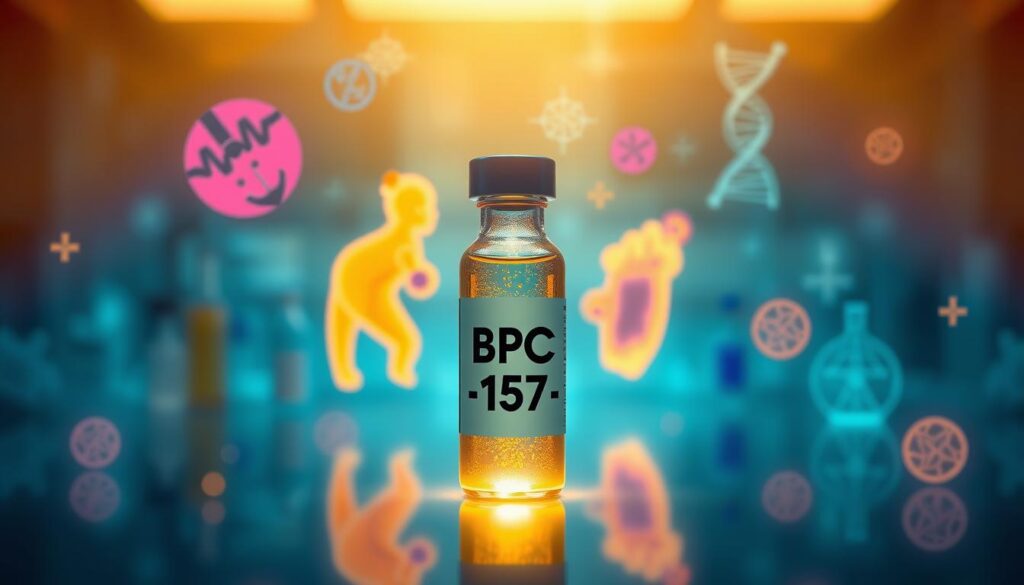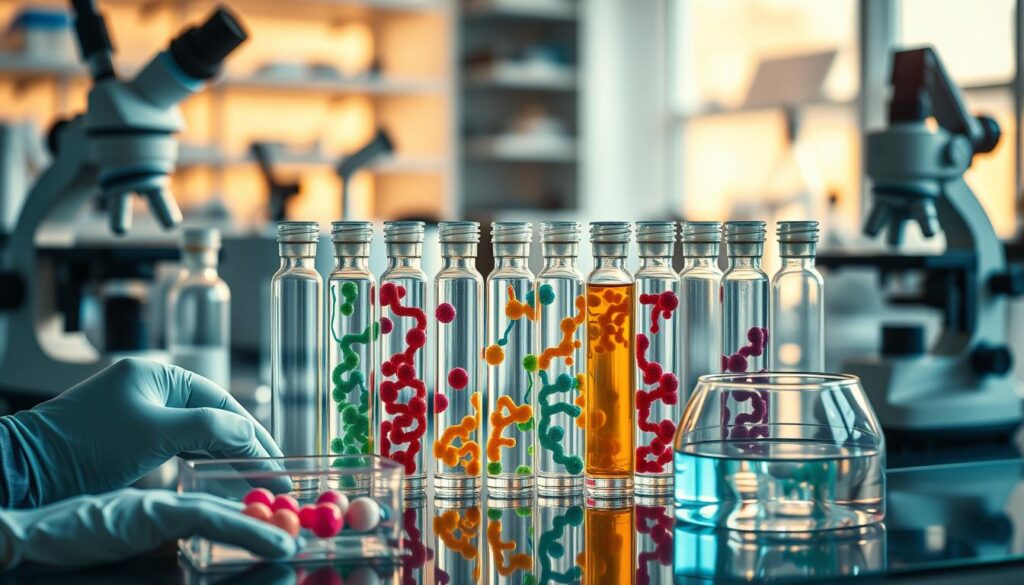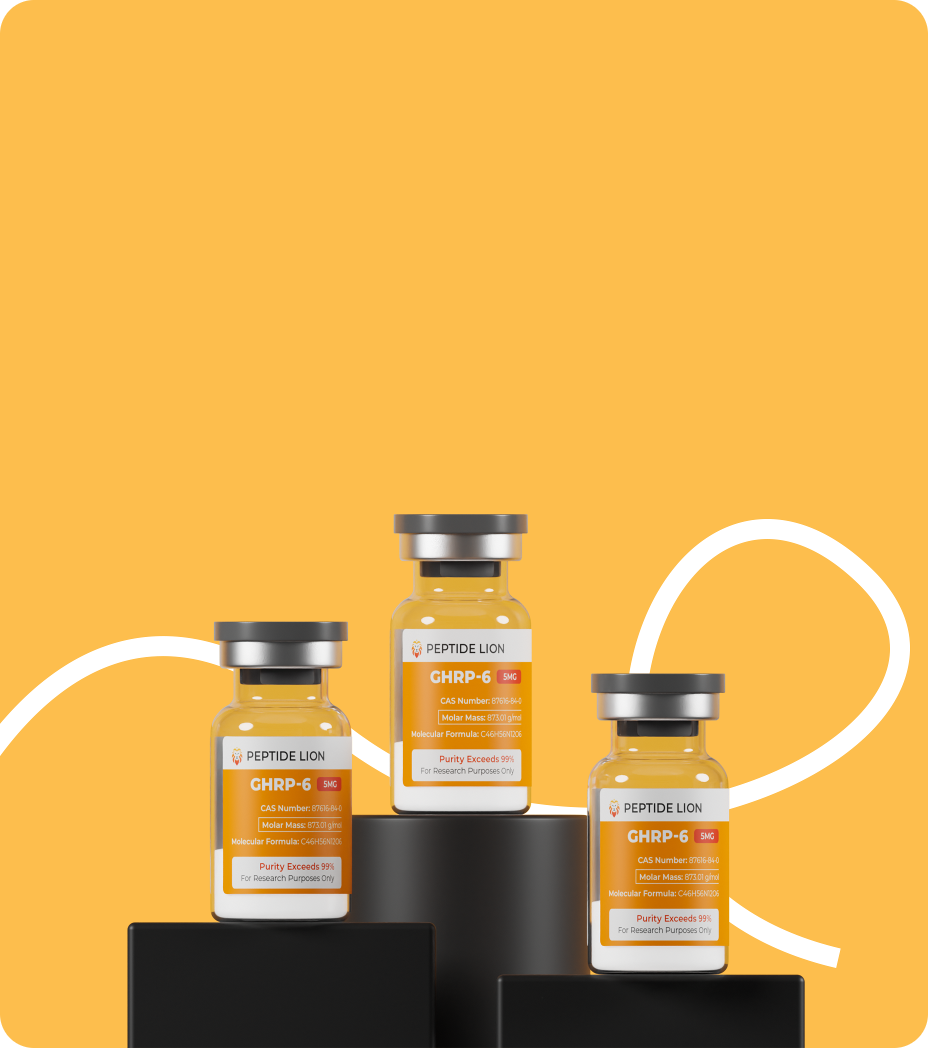The world of human health is always changing. Researchers are looking into new areas to improve our well-being. They’re focusing on two special peptides – BPC-157 and TB500. These peptides could help with many health issues.
This article will explain what these compounds are, where they come from, and why scientists think they could be helpful.
Key Takeaways
- BPC-157 and TB500 are two promising peptides with potential benefits for human health.
- These peptides have been the subject of extensive research, exploring their therapeutic applications.
- BPC-157 is derived from a stomach-protecting peptide and has shown promise in wound healing, anti-inflammatory, and neuroprotective properties.
- TB500 is derived from a thymosin protein and has been studied for its potential to promote tissue repair and regeneration.
- Ongoing research aims to further understand the mechanisms of action and potential therapeutic uses of these peptides.
Human Health and Peptides: A Deep Dive into BPC-157 and TB500’s Potential
Peptides are becoming a big deal in the world of health and wellness. BPC-157 and TB500 are two peptides that stand out for their potential health benefits. They could change the way we treat health issues.
BPC-157 comes from a natural healing compound in our bodies. It can help heal wounds faster and reduce inflammation. Scientists are excited about its potential to improve health.
TB500 is a man-made peptide that could help repair and regenerate tissues. Researchers think it could be a game-changer for treating injuries and improving heart health. Peptides like these could open new doors in healthcare.
| Peptide |
Potential Benefits |
Mechanism of Action |
| BPC-157 |
- Wound healing
- Anti-inflammatory effects
- Neuroprotective properties
|
- Promotion of tissue regeneration
- Modulation of inflammatory pathways
- Protection of nerve cells
|
| TB500 |
- Tissue repair and regeneration
- Cardiovascular support
- Anti-aging effects
|
- Stimulation of cell migration and proliferation
- Improvement of blood flow and oxygenation
- Reduction of inflammation and oxidative stress
|
Scientists are learning more about peptide therapies and their potential. These natural compounds could lead to big changes in healthcare. They could help create treatments that work better for each person.
“The future of healthcare lies in the synergistic integration of cutting-edge peptide research and holistic approaches to human well-being.”
What are Peptides?
Peptides are small chains of amino acids, the basic building blocks of life. They are vital for human health, helping with many body functions. By learning about peptides, we can see how they can boost our health.
Understanding the Building Blocks of Life
Peptides are made of amino acids linked together. These amino acids, like leucine and glycine, are key to making proteins in the body. The way these amino acids are arranged shapes the peptide and its role.
The Role of Peptides in Human Health
Peptides help with cell signaling, hormone control, and immune function. They can work as neurotransmitters, fight bacteria, and aid in healing wounds. By studying peptides, scientists and doctors can find new ways to improve health.
| Peptide |
Function |
Potential Applications |
| Insulin |
Regulates blood sugar levels |
Diabetes management |
| Oxytocin |
Involved in childbirth and bonding |
Obstetrics, mental health |
| Glutathione |
Antioxidant, detoxification |
Oxidative stress, liver health |
Peptides are crucial for our health, showing their importance in our complex systems. As research goes on, we see more ways peptides can help us and lead to new treatments.
“Peptides are the key to unlocking the secrets of the human body and paving the way for transformative healthcare solutions.”
Introducing BPC-157
BPC-157, short for Body Protection Compound 157, is a peptide that has caught the eye of scientists. It shows great promise for improving human health. It came from research that opened new doors in using peptides for health.
Origins and Discovery
In the early 1990s, researchers at the University of Zagreb, Croatia, looked into the healing powers of gastric juice. They found a peptide that helped heal tissues like the stomach, muscles, and tendons fast.
This key find led to more studies on BPC-157, a peptide from gastric juice. Research showed it could help with many health issues, like inflammation and healing nerve and tissue damage.
“BPC-157 represents a pioneering discovery in the field of peptide-based therapies, offering promising avenues for enhancing human health and well-being.”
Studies on BPC-157 have grown, showing its potential uses. Scientists worldwide are learning more about it. This could lead to new ways to use BPC-157 in medicine.
The Potential Benefits of BPC-157
BPC-157 is a special peptide that has caught a lot of attention for its health benefits. It comes from the “body protection compound.” Researchers are looking into how it can help with wound healing, reduce inflammation, and repair tissues.
This peptide is showing great promise in wound healing. Studies suggest it can speed up healing for different wounds like skin cuts, ulcers, and injuries. It does this by helping cells grow and work better in healing wounds.
BPC-157 is also being studied for its anti-inflammatory effects. Chronic inflammation can lead to many health problems. This peptide might help control inflammation, helping people with inflammatory conditions.
Another area where BPC-157 stands out is in tissue repair. It’s been found to help heal and regenerate tissues like tendons, ligaments, and parts of the gut. Its wide range of uses makes it very interesting for medicine.
As scientists learn more about BPC-157, they see its huge potential. While we need more studies, the early results are exciting. BPC-157 could be a game-changer for health and wellness.

“BPC-157 has the potential to revolutionize the way we approach wound healing, tissue repair, and inflammatory conditions. Its versatility and promising findings make it a peptide worth watching in the field of human health.”
Exploring TB500
BPC-157 has gotten a lot of attention, but TB500 (Thymosin Beta 4) is also gaining interest. This peptide is being studied for its many uses and health benefits. Researchers are looking into how it can help with human health.
What is TB500?
TB500 is a man-made version of a natural peptide in our bodies. It has 43 amino acids and helps with cell growth and repair. It’s key in healing injuries and fighting inflammation.
Potential Applications and Benefits
- TB500 helps repair and regenerate damaged tissues like muscles, tendons, and skin. It encourages new blood vessel growth and brings cells to injured areas. This could be a big help for many conditions.
- It might also slow down aging by protecting cells from damage and keeping chromosomes healthy. This could improve skin, joints, and overall health as we age.
- Studies show TB500 could boost heart health by making new blood vessels and lowering inflammation. This could be good for the heart and blood vessels.
- Some research points to TB500’s benefits for the brain. It might help with recovery from brain injuries and certain conditions like stroke.
As scientists learn more about TB500, its uses and benefits are becoming clear. It seems to help with healing, fighting aging, and boosting overall health. TB500 could be a big step forward for human health.
| Potential Application |
Benefit |
| Tissue Repair |
Stimulates growth of new blood vessels and promotes migration of reparative cells to injury site |
| Anti-Aging |
Protects cells from oxidative stress and supports maintenance of telomeres |
| Cardiovascular Health |
Enhances growth of new blood vessels and reduces inflammation in the heart and blood vessels |
| Neurological Benefits |
May have neuroprotective effects and aid in recovery from neurological injuries and conditions |
“TB500 holds promise as a valuable tool in the pursuit of improved human wellbeing.”
Safety and Considerations
Using peptides like BPC-157 and TB500 is safe if done right. These compounds can greatly improve health, but we must use them wisely. It’s important to know how to use them safely and understand their effects.
Potential Side Effects
BPC-157 and TB500 are usually safe in studies. But, they might cause some side effects. These could be mild stomach issues, headaches, or skin problems. Always take the recommended dosages and talk to a doctor before starting.
Regulatory Landscape
The rules for peptides vary by place. In the U.S., the Food and Drug Administration (FDA) checks these compounds. They make sure they are safe and work well. If you want to try BPC-157 or TB500, learn about the regulations in your area to use them right.
“The responsible use of peptides like BPC-157 and TB500 is essential to unlocking their full potential for human health and wellness.”
Dosage Considerations
- Follow the recommended dosages given by doctors or trusted sources.
- Start with a small dose and increase it if needed, with a doctor’s advice.
- Think about your own body and adjust the dosages as needed.
Putting safety first lets us use these amazing peptides wisely. This way, we can help improve human health and wellness.

Research and Clinical Studies
Scientists are deeply into studying BPC-157 and TB500, two exciting peptides. Their research has uncovered a lot about these substances. It’s setting the stage for future breakthroughs in health science.
Current Findings
BPC-157 is showing great promise in healing tissues and speeding up recovery. It’s been tested on the gut and muscles with good results. It can help heal wounds faster, lessen swelling, and protect organs from damage.
Meanwhile, TB500 is also making waves. It helps cells move better, grows new blood vessels, and controls swelling. This makes it a strong contender for treating heart, brain, and skin issues.
| Peptide |
Current Findings |
Potential Applications |
| BPC-157 |
- Tissue repair and regeneration
- Anti-inflammatory properties
- Organ injury protection
|
- Gastrointestinal disorders
- Musculoskeletal injuries
- Wound healing
|
| TB500 |
- Cell migration and angiogenesis
- Anti-inflammatory regulation
|
- Cardiovascular conditions
- Neurological disorders
- Skin-related applications
|
Future Directions
As research on BPC-157 and TB500 goes on, scientists are keen to learn more. They want to see how these peptides can help with more health issues. They’re looking into better ways to use them and planning bigger studies to prove their safety and effectiveness.
This ongoing research could lead to big improvements in health and wellness. It’s an exciting time for these peptides.
“The research on BPC-157 and TB500 has opened up exciting new avenues for therapeutic interventions, and we are eager to uncover their full potential in improving human health.”
Conclusion
BPC-157 and TB500 are amazing peptides that could change how we approach human health. They help with tissue repair and regeneration. They also reduce inflammation and pain.
Studies have shown how these peptides work and their possible uses in medicine. But, we need more research to fully understand their benefits.
We must keep studying BPC-157 and TB500 to learn more about them. This will help us know how they work, their safety, and the right amount to take. By doing this, we can create new treatments that use these peptides to make people healthier and happier.
FAQ
What are BPC-157 and TB500?
BPC-157 and TB500 are two peptides being studied in human health. They could help with wound healing, tissue repair, and reducing inflammation.
What are the potential benefits of BPC-157?
BPC-157 might help with wound healing, reduce inflammation, and improve tissue repair. It could also help with gut issues and muscle injuries.
What is TB500 and how does it differ from BPC-157?
TB500 is another peptide with potential health benefits. Unlike BPC-157, which focuses on healing and repairing tissue, TB500 might help with regenerating tissue, fighting aging, and boosting overall health.
Are BPC-157 and TB500 safe to use?
Using peptides like BPC-157 and TB500 safely is key. While they seem safe, it’s important to talk to doctors and follow the right dosage to use them responsibly.
Where can I find more information on the latest research and studies on BPC-157 and TB500?
Researchers are always looking into BPC-157 and TB500. For the latest studies and findings, check out scientific journals, healthcare databases, and industry publications.







